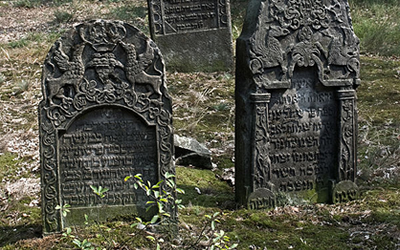The Przytyk pogrom occurred between Polish and Jewish community in Przytyk, Radom County, Kielce Voivodeship, Second Polish Republic, on March 9, 1936. The disorder began as a small dispute between a Jewish baker and Polish farmer vending his wares. Disturbances took on such a severe dimension as a result of the use of firearms by Jews. According to historian Emanuel Melzer it was the most notorious incident of antisemitic violence in Poland in the interwar period, and attracted worldwide attention, being one of a series of pogroms that occurred in Poland during the years immediately before the outbreak of World War II.
Two days before the events some of the Jewish inhabitants assembled in the town square in anticipation of the attack by the farmers, but nothing befell on that day. Two days later, however, on a market day, according to historians Martin Gilbert and David Vital, the farmers attacked the Jews; the fight ended with two Jewish and one Polish casualty.
Polish historian Piotr Gontarczyk writes in his book "Pogrom? Zaj?cia polsko-?ydowskie w Przytyku 9 marca 1936 r. Mity, fakty, dokumenty" that first incident took place early in the morning of March 9, when Jewish merchants destroyed a stall which belonged to a Polish hat-maker. Police intervened, but on the same day, at 15:00, a member of Endecja, Józef Strza?kowski, appeared in front of a stall of a Jewish baker, urging Polish peasants not to buy any products from Jewish merchants. The baker kicked Strza?kowski's crutch, and in return, the Pole hit him in the arm. The baker reported the incident to the police that resulted in Strzalkowski's arrest. The consequence generated outrage amongst the Polish farmers, who encircled the police station, demanding the release of Strza?kowski. Subsequent 20 minutes, the peasants and Jewish youth, which also began gathering in the town square, were dispersed by the police.
Polish peasants, aware of their numerical superiority, began gathering on the other side of the Radomka river. Near the bridge, another riot began, when Jewish stalls were turned over. A group of Jews arrived and armed with revolvers and clubs started attacking random bystanders. Both sides threw rocks at each other, and the police had to divide their forces into two groups. One was busy dispersing the peasants, while another one was trying to restrain the Jews, who kept on throwing rocks. When the police seemed to have settled the situation, a Jewish member of the Mizrachi movement, Szulim Chil Leska, began shooting at Poles from the window of a house. Leska killed a peasant named Stanis?aw Wie?niak.Two other Poles were shot as well. This infuriated the Polish crowd of some 1,000, which the police were unable to control.
Altogether, the riot lasted for some 45 minutes. A crowd of peasants, enraged by the killing of one of their own, beat up several Jews, smashing several stores and stalls, including a store which belonged to Fajga Szuchowa. Among others, the house of a woman named Sura Borensztajn, where a number of Jews hid, was attacked. A Jewish couple of Chaja and Josek Minkowski were killed during the riot, while their children were beaten up. Josek, who was a shoemaker, was probably killed by an axe in the hall of his house. His wife was severely beaten and died in hospital in Radom. Furthermore, 24 Jews were injured.
Sources
- https://en.wikipedia.org/wiki/Przytyk_pogrom
Image from https://en.wikipedia.org/wiki/File:Jewish_cemetery_Przytyk_IMGP7857.jpg by Nikodem Nijaki





No Comments found